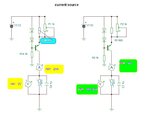Al J
Newbie level 5
I am new to the world of FETs and need some help in choosing one. It will be used to make a voltage controlled resister (I hope) in an automotive application.
Range of VCR's resistance desired: 5-70 ohms
Vcc: 12v
Input circuit is thermistor(?) whose operation range is 250-2k ohms. Expect to use Vcc on a voltage divider to provide control voltage to VCR.
Range of VCR's resistance desired: 5-70 ohms
Vcc: 12v
Input circuit is thermistor(?) whose operation range is 250-2k ohms. Expect to use Vcc on a voltage divider to provide control voltage to VCR.





